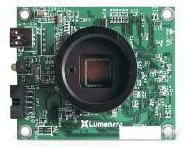My First Vision System
“Learning gives creativity
Creativity leads to thinking
Thinking provides knowledge
Knowledge makes you great”
Dr. APJ Abdulkalam
"Alternate Fueled vehicle" was the title of my final year project in university. After familiarizing myself on alternate fuels, I decided to use Ethyl alcohol as the alternate fuel for my two stroke motorcycle. Unlike four stroke, two stroke engines require lubricant to be mixed with fuel, and therefore based on my Prof's recommendation, I purchased castrol oil from the gas station, mixed the fuel and the oil in 2:1 ratio and began riding the bike, within a mile my motorcycle began emitting thick black smoke and became engulfed in fire (yes, I jumped from the motorcycle and ran for my life). To receive compensation from my University and to prove my professor was wrong, I visited my professor the next day and told him the incident.
My professor replied by saying, "I told you to purchase castor oil (vegetable oil), not castrol oil, because castor oil separates ethanol from water ", being a turkey I asked my professor "So after drinking alcohol is it possible for me to drink castor oil to have a higher kick???” (because water will go out and ethanol will stay in the body). I was asked to leave his office. Many a times even though a lot of material is available on the net, we can still remain confused.
Almost everyday I receive a phone call from new prospective clients about building a simple, inexpensive vision system to accomplish a certain goal. Without being at the client site it is often difficult for me to make sense of what exactly the client wants. All he knows is that he needs a camera to capture and display images. This document aims to provide a brief idea to novice vision acquisition and processing users.
As Napoleon Bonaparte said, “A picture is worth a thousand words.” So to ease the complexity involved in understanding a vision system, I decided to explain a simple vision system symbolically.
From the graphical representation we understand that the following components are required to build a vision system:
- Camera
- Frame Grabber
- PC with a monitor, keyboard, and a mouse (or laptop)
- Interface cables
- Power supply for camera
- Software for image acquisition and processing
Camera
A camera can be considered to be the eye of the vision system. Image sensor which is present on the front end of the camera converts an optical image into an electrical signal. This signal then passes through several electronic components before being sent out.
Since this image needs to be sent to the control PC there should be a common interface mechanism between the camera and the PC. The different interfaces available today are:
- NTSC – Analog
- USB (2.0) – Digital
- IEEE (1394) a and g – Digital
- Camera Link (Base, Medium, Full)
- GigE Vision
- USB (3.0)
- Coax Express
- H.S. Link
If you are unable to decide on the interface, you can always contact me and provide me with the speed at which you want to carry out the inspection (eg. 10 bottles per second) and I can calculate the data transfer rate.
Please note: if the camera sends out images at a rate faster than the rate at which the computer can accept images will either be lost or the system will hang.
Interface Cables
Once we have decided the type of camera we would like to use for our application. Corresponding cables will be required. For example:
- NTSC – BNC cable
- Camera Link – MDR or HDR camera link cable
- GigE Vision – RJ45 cable
- IEEE-1394a or b – IEEE-1394 cable
- USB 2.0 – USB cable
As I mentioned previously, the camera sends out a signal (data) which is fed into the computer. The computer cannot receive these signals directly, hence a frame grabber (a board that receives data from the camera) is used inside the computer.
Except USB for all other interfaces I would recommend a frame grabber. Why? Even though many modern day computers have IEEE-1394G connectors on them as well as two Ethernet ports, if your need to avoid frame drops or need to avoid bottle neck bandwidth then one must use a frame grabber.
Frame grabbers are generally inserted into the PCI, PCIx or PCIe slots depending upon the frame grabber design and what slots the computer has available. Oh, not to forget laptop based frame grabbers are also available.
If your application does not need a critical speed then frame grabbers can be avoided. If you want to know whether your application needs a frame grabber drop me a comment or call me at the office.
- Sudeep
Labels: Board level camera, IEEE-1394G, interface cables, NTSC, vision system





0 Comments:
Post a Comment
Subscribe to Post Comments [Atom]
<< Home